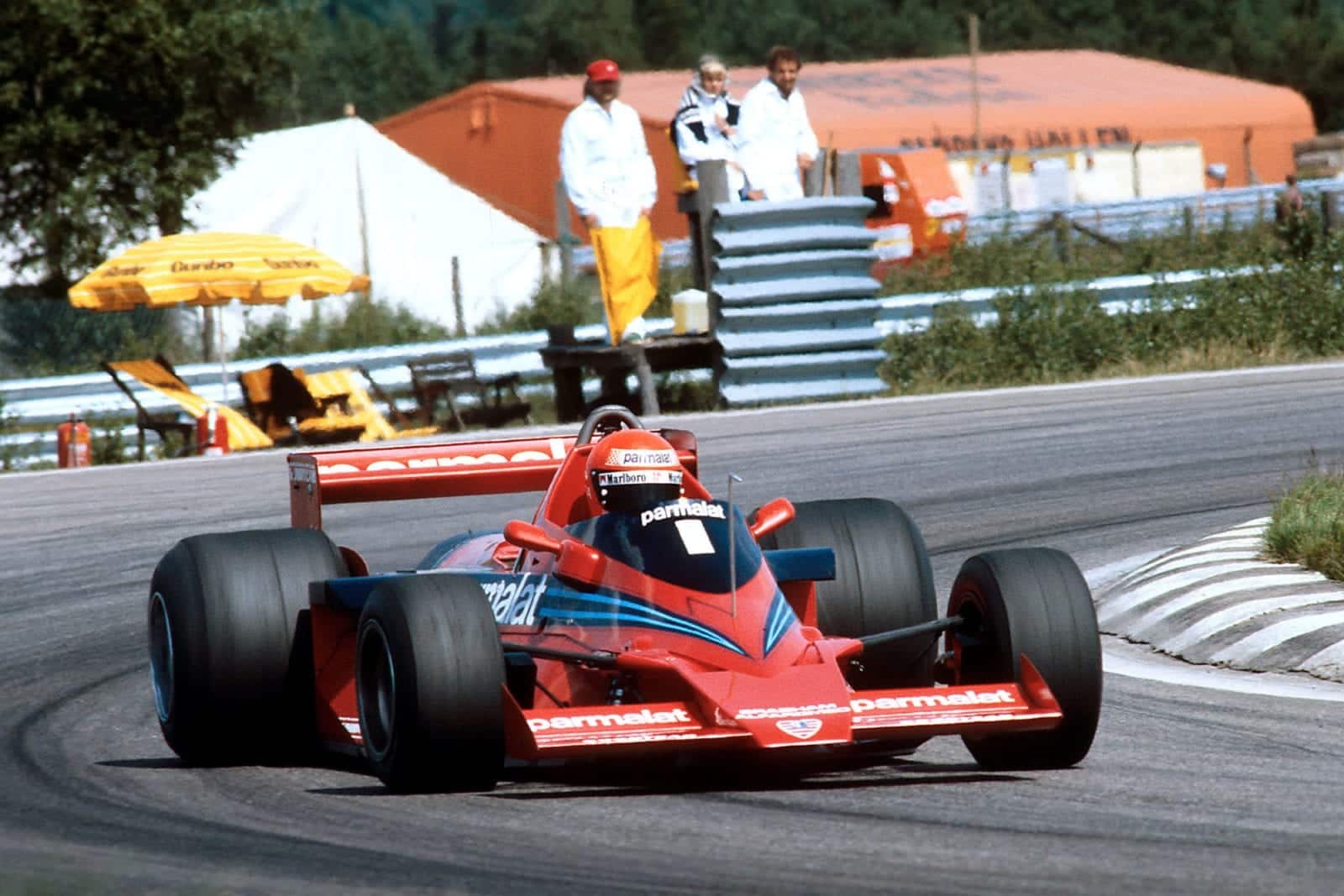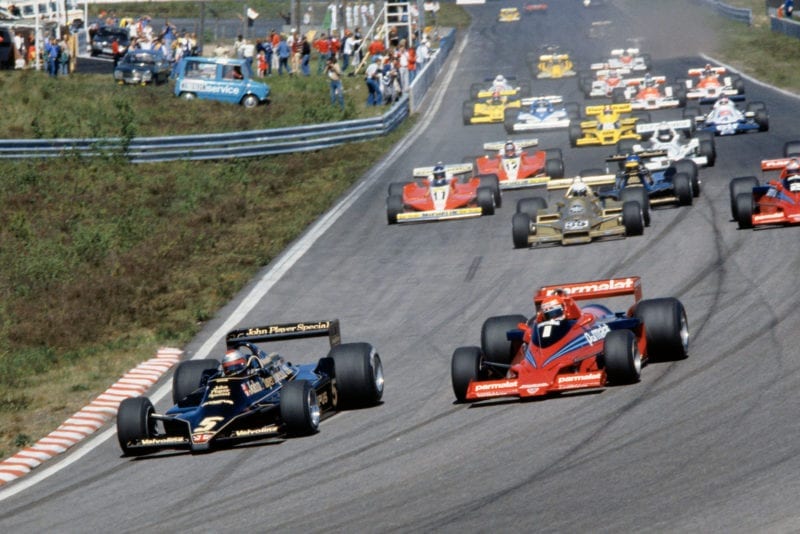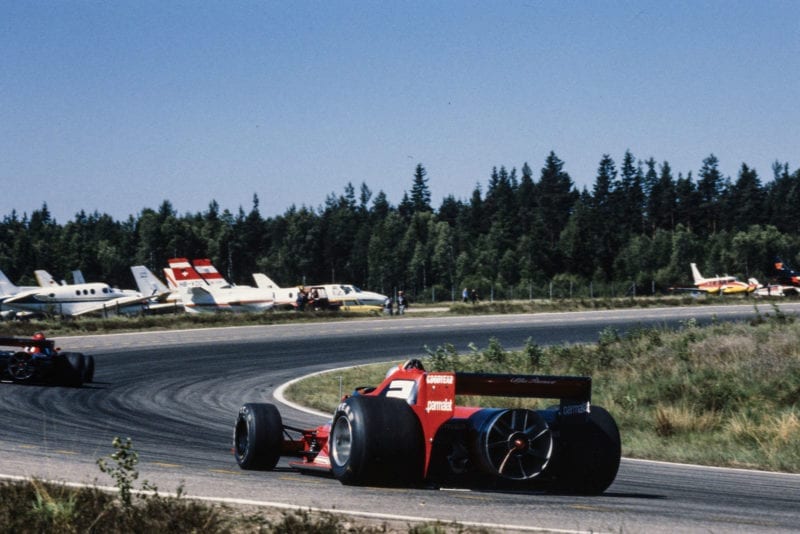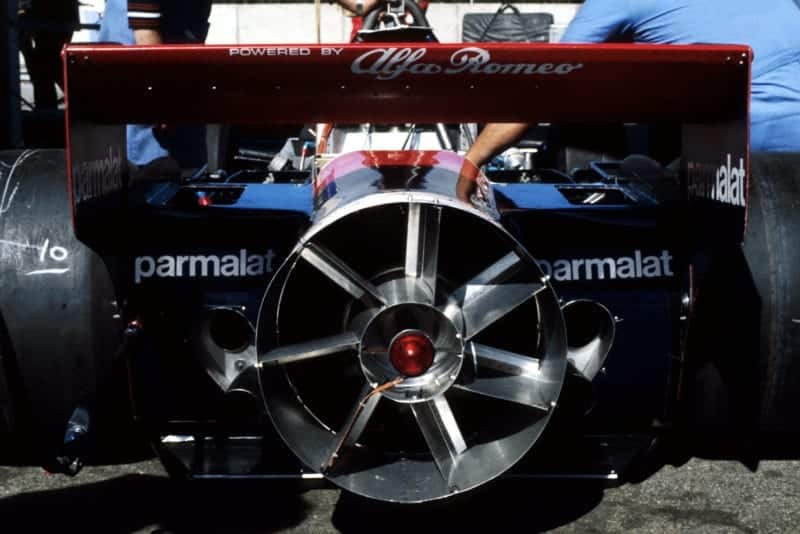1978 Swedish Grand Prix race report

Niki Lauda came 1st in the innovative Brabham 'fan-car'
Motorsport Images
Brabham-Alfa Romeo win under a cloud
Anderstorp, June 17th
The superiority of the Lotus 79 “ground effects” car was severely challenged in the Swedish GP by the B–version of the BT46 Brabham-Alfa Romeo, a brilliantly conceived design even through there was considerable doubt as to its legality according to rules agreed upon by the Formula One Constructors Association and the CSI. The bone of contention was item 5 in Article 1 which is Definitions: Under the heading Aerodynamic Devices the definition states: – “Any part of the car whose primary function is to influence aerodynamic performance” is considered to be an Aerodynamic Device, and therefore according to Article 3, Item 7 “Aerodynamic devices must comply with the rules relating to coachwork (i.e. heights, widths etc.) and must be firmly fixed whilst the car is in motion. It is permissible to bridge the gap between the coachwork and ground by means of flexible structures subject to the coachwork measurements”.

Mario Andretti fends off Lauda at the start
Motorsport Images
The Brabham team made experiments with BT46/2, one of their earlier tests cars, and arrived in Sweden with BT46/6 (Lauda) and BT46/4 (Watson) modified in a similar manner. They had a large single water radiator lying flat on top of the Alfa Romeo flat-12 engine with the whole of the rear of the care between the wheels, totally enclosed and sealed off, with the exception of the upper surface of the radiator. At the back a very large fan was driven off the rear of the gearbox and this sucked all the air out form around the engine/gearbox area, which naturally caused cooling air to flow down through the horizontal radiator. So far so good. If the path from the underside of the radiator to the fan had been ducted and sealed there would have been no further discussion, but it was not. The fan could also suck away all the air around, and under the engine and also under the car. Flexible skirts under the car at the front, sides and rear, effectively sealed off the underside of the car so that the fan was creating a low pressure area under the car, causing a down load to be applied to the car (in effect, the reverse of a hovercraft). Now the important factor was that the Brabham team said that the primary function of the device was to draw air through the radiator and cool the engine. That was what they said. The arguments arose because certain constructors, principally Lotus, McLaren, Tyrrell, Surtees and Williams, did not accept what the Brabham team said. They maintained that the primary function influenced aerodynamic performance and therefore by Art. 3 It. 7 it had to be fixed whilst the car was in motion.
Before the race the Swedish organisers received five official protests, but turned them all down and allowed the Brabhams to take part. Niki Lauda really pressed Andretti’s Lotus 79 throughout the first 37 laps of the 70 lap race, and we saw a piece of real motor racing demonstrated by two hard drivers, and they left the rest of the field far behind. On lap 38 Lauda went by into the lead and eight laps later there was an almighty bang as the Cosworth Development DFV in the Lotus destroyed itself, leaving the controversial Brabham-Alfa Romeo BT46B to cruise home to an easy victory. Putting aside aerodynamics and rules and regulations, it was a superb demonstration of motor racing between Cosworth DFV and Alfa Romeo flat-12, and the Alfa Romeo won convincingly.

Lotus’ Ronnie Peterson scored a 3rd place at his home grand prix
Motorsport Images
But to go back to the beginning in this brief report, the Lotus 79 set the pace during practice, both Andretti and Peterson being in command until almost the end of the third practice session, when Watson and Lauda moved convincingly in amongst the Lotus cars. Until that point they had not been very impressive and the Brabham team had spent a lot of time adjusting the fan and the skirts and getting their “cooling system” to work correctly. Andretti was well established on pole position, three-quarters of a second ahead of Watson’s Brabham, but Peterson could not match his team-leader’s performance. From this front row position Watson muffed his start, while Lauda made the most of his position behind Andretti. Patrese, in his Arrows, followed them through on the right of the grid while Watson fouled up those on the left. In trying to regain lost ground Watson spun off and filled his engine with dirt. Peterson soon worked his way from fifth place into third place, but then got a puncture in a rear tyre from debris scattered by Pironi’s Tyrrell 008/2-2 after it had collided with Brambilla’s Surtees TS20/01. A stop for a new tyre put Peterson back into seventeenth place, but as in Belgium, the Swede got his head down and did a terrific drive up through the field into third place. In the closing laps he fought with Patrese, who had inherited second place when Andretti retired, but the young Italian wasn’t going to relinquish second place that easily and used some pretty rough tactics to keep Peterson behind right through to the chequered flag.

Brabham dominated with their new fan car
Motorsport Images
Earlier, Alan Jones in the Williams FW06/001 had driven a very good race to vanquish the Ferraris of Reutemann and Villeneuve and then caught and passed Patrese, only to have the Arrows driver nudge him into a spin. Later a sized wheel bearing in the right front hub put the Williams car out of the race. In mid-field there was a very good race going on between Laffite (Ligier), Tambay (McLaren), Hunt (McLaren), Regazzoni (Shadow) and Fittipaldi (Fittipaldi), which continued right through to the finish, even though they were lapped by the leader. Laffite looked to have command of the situation until the Matra V12 engine gave a momentary hiccough, and Tambay, Regazzoni and Fittipaldi went by. Hunt played around with this lot for most of the race, the McLarens being outpaced by the front runners, and he discovered that mid-field racing can be very hard and unruly. Down at the end of the field Hector Rebaque had a good race in his Lotus 78, against Jochen Mass in his ATS, and the Mexican won the battle.
Both Ferrari drivers were unhappy with their choice of Michelin tyres and made pit stops for changing them, but it made little difference and they finished in lowly positions. Scheckter in the Wolf WR5 was never in the picture, though he had gone well in practice, and during the race a water leak developed and the S. African drove the car to a standstill, the Cosworth V8 becoming so hot that plastic parts in the injection system melted!

This was the rest of the field’s main view for most of the race
Motorsport Images
Regardless of technical regulations, protests, rules, decisions and so on, it was a very good race, though the 50,000 Swedish spectators were disappointed not to see Peterson win, but as usual he tried hard and drove brilliantly. He hasn’t lost the magic touch, even if the science of Formula One is a bit beyond him. Lauda was at his ruthless and calculating best.
As we close for press controversy over the fan-cooling/ground effects of the Brabham BT46B waxes strongly, and the outcome will hopefully be discussed in the August Motor Sport. Protests aside, and viewing the project as a technical exercise, it was a huge success and Gordon Murray and his designers deserve every credit, not only for the execution, but for winning first time out. – D. S. J.
Results:
Swedish Grand Prix – Formula One – 70 laps – Anderstorp – 4.031 kilmetres per lap – 282.17 kilometres
1st: N. Lauda (Brabham BT46/6B) 1 hr. 41 min. 00.606 sec. – 167.6 k.p.h
2nd: R. Patrese (Arrows FA1/4) 1 hr. 41 min. 34.625 sec.
3rd: R. Peterson (Lotus 79/2) 1 hr. 41 min. 34.711 sec.
4th: P. Tambay (McLaren M26/5) 1 lap behind
5th: C. Regazzoni (Shadown DN9/4A-2) 1 lap behind
6th: E. Fittipaldi (Fittipaldi F5A/3) 1 lap behind.
Fastest lap: N. Lauda (Brabham BT46/6B) on lap 5, in 1 min. 24.836 sec. – 171.0 k.p.h.
